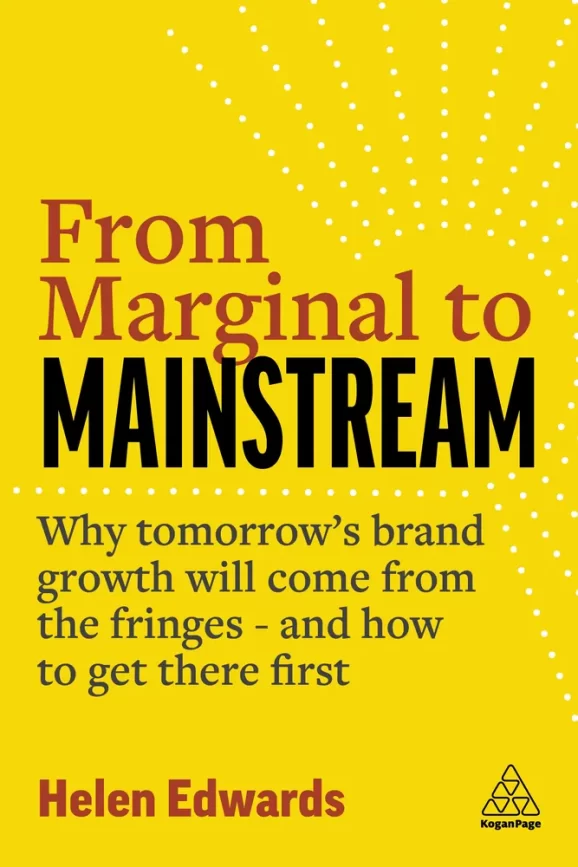Shaping the markets of 2030

Helen Edwards reveals five eye-opening behavioural trends that will see consumer-driven disruption influence the markets of tomorrow
Ask what will shape the businesses of the future and the answers will default to technology. It’s digital, it’s AI, it’s the protean promise of the metaverse. It won’t be long before the term “disruption” is invoked – always as a supply-side phenomenon, where opportunities cascade from a technological or process innovation delivered by industry and entrepreneurs.
But there is another kind of disruption out there – one that is less considered, less vaunted, but no less powerful in its potential effects. This is the kind that springs from the demand-side of the equation, where consumers in their millions change habits and adopt new ways of going about their lives, propelling new categories, inspiring new ways to market, creating new winners and fuelling new growth.
A recent example is the meteoric rise of veganism. For decades, vegans were a tiny, if vociferous, minority, camped well inside the margins of the 1% of the population. Then, within the space of a few years, the concept broke through, and today, the global plant-based food category is worth $26bn and projected to grow to $61bn by 2028.
What is the next “veganism”? A clue is that it will seem unlikely right now, but some people will be doing it, somewhere in the fringes, and they will feel strongly about it. That passion is a marker – the intensity that one day could overcome the resistance of the mainstream and burst through. I have spent the last two years researching into marginal behaviours and fringe ways of life to devise a systematic way of predicting which are most likely to lead to consumer-driven disruption, and all the opportunities that come with it. That work included original, cross-cultural, qualitative and quantitative studies, plus a modelling methodology to point up the most promising behaviours.
Here are five trends that may be tiny now in 2023 – but could have tremendous impact and potential by the time we get to 2030:

Living off the sea
What? This is not about plundering our oceans for more fish; it’s about farming and harvesting kelp and other sea plants either to use as a raw material or as a source of nutrition.
Why? In our research, people were open to it, it feels familiar – eating seaweed isn’t completely unheard of, and there was a general sense of “goodness” when thinking about the oceans. The idea gets more appealing when people know that kelp grows at a phenomenal rate naturally and is a sustainable form of nutritionally rich protein.
From a business perspective, look out for multicategory opportunities in packaging, food, drink, health and beauty. In fact, there is already some interesting entrepreneurial activity. One notable startup is Notpla, which makes edible and biodegradable packaging for food, drinks and sauces. The lead ingredient? Seaweed.
Microdosing
What? Taking daily minuscule doses of psychoactive drugs – usually psylocibin (magic mushrooms).
Why? At a very low intake, psylocibin is said to boost mood and sharpen the senses without making the user high. The downside right now is that it is illegal for recreational use in most countries. But legislation has already changed in some jurisdictions, such as the Netherlands and the US state of Oregon, and others could follow.
For many research respondents – especially members of Generation Z – it was perceived as ‘interesting’. Microdosing is seen as having neither the “binge” associations of drinking nor the health risks of smoking. And it’s natural – with some people comparing it to the natural “hit of coffee”. There is also increasing awareness of emerging clinical research on the benefits. Combine that with mainstream TV characters getting involved, like lawyer Diane in CBS’s The Good Fight, and you begin to get more widespread acceptance and interest. For businesses in the social experience or “food and drink for pleasure” spaces – be ready for legislation change.
Quantified self
What? Daily measuring and recording of personal metrics. Sometimes called “lifelogging”, it’s the monitoring of biometric data like blood pressure, heart rate, blood oxygenation and temperature but it can also include sleep patterns, feelings and mood.
Why? The appeal is both prophylactic and proactive. Enthusiasts believe it can enrich their understanding of themselves, helping them live healthier lives. In our quantitative survey, awareness of the practice was modest, but appeal across the board, was high. There is no doubt the experience of Covid has left people more aware of their bodies and the importance of understanding physiological change. In its pure form, the quantified-self lifestyle is onerous and time-consuming – but this is where technology might come in to simplify, gamify and make the whole process easier and more engaging. Good for individuals and also good for our under-pressure healthcare systems.

No soaping
What? To simply use water to clean the body and hair – no detergent-based soap, shower gel, shampoo or conditioner.
Why? Advocates believe that people have become “unhealthily clean”. They claim the skin microbiome is just as important as the gut microbiome and has a similar need for friendly microbes – particularly the ammonia-oxidising bacteria found in dirt. With mainstream consumers fully bought into the importance of a healthy gut microbiome, the potential to extend it to the skin and hair is a relatively easy shift in perceptions. A blow for the big consumer goods companies like P&G and Unilever? Well, not necessarily. Expect them to look to the probiotics market for inspiration and find new ways to help people stay clean and sweet-smelling while supporting their skin microbiome.
Home burials
What? Burials in gardens or privately owned land, to keep loved ones close and lay them to rest in a place they loved.
Why? It’s the indirect potential of this that is most interesting, since, for most of the people we talked to, actual home burial was simply too impractical to take seriously: “Well, I can’t bury my dad on the balcony, can I?” was one memorable comment.
But at the same time there was a yearning to find different, more personal ways to dispose of, honour, and remember loved ones when they die. Entrepreneurs, ever quick to see a shift in culture, are already in the space. One of the more interesting hits the sweet spot of meeting a personal need and addressing environmental concerns. Seattle-based Recompose specialises in human composting, where the deceased is laid in a vessel surrounded by plant material to create a nutrient-dense soil which can be used to enrich the land. For every person choosing it over conventional burial or cremation, one metric tonne of CO2 is prevented from entering the atmosphere.
The global deathcare category is worth over $122bn, it’s growing in line with underlying demographic trends, and consumers are looking for something different. By 2030 this is a sector where you will see some significant changes.
Eyes on the prize
No ambitious entrepreneur will take their eye off technological advance and the potential for breakthrough disruption. And nor should they.
But it is also worth keeping a reflective gaze on human behaviour, too. Out there somewhere in the fringes is a movement, a behaviour, a way of life that is tiny today but will be huge tomorrow. Consumer-driven disruption will play its part in shaping the markets and businesses of the future.


About the Author
Dr Helen Edwards is an award-winning business columnist, marketing consultant and Adjunct Associate Professor of Marketing at London Business School. Her latest book ‘From Marginal to Mainstream: why tomorrow’s brand growth will come from the fringes – and how to get there first’ is out now, published by Kogan Page.


